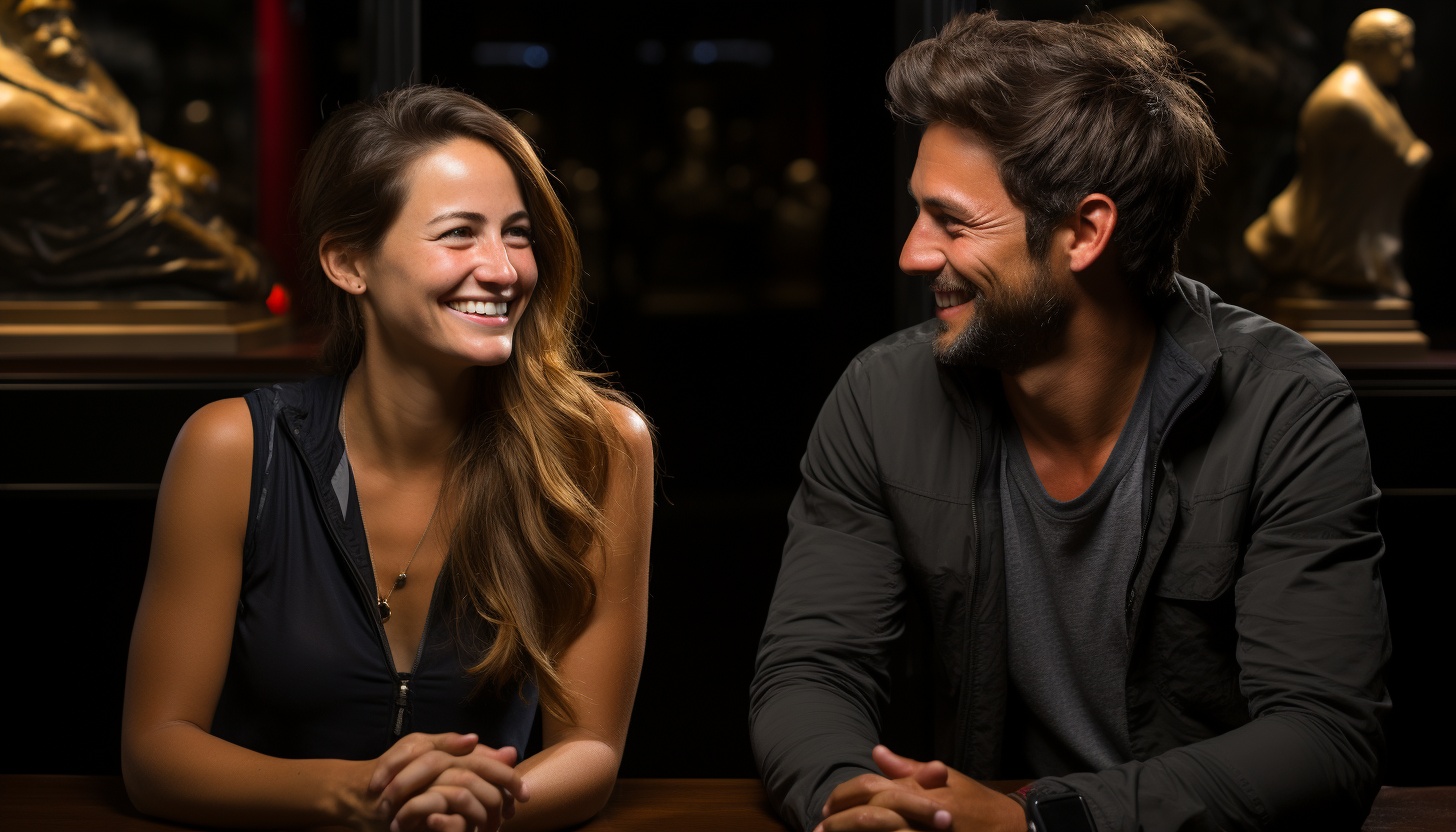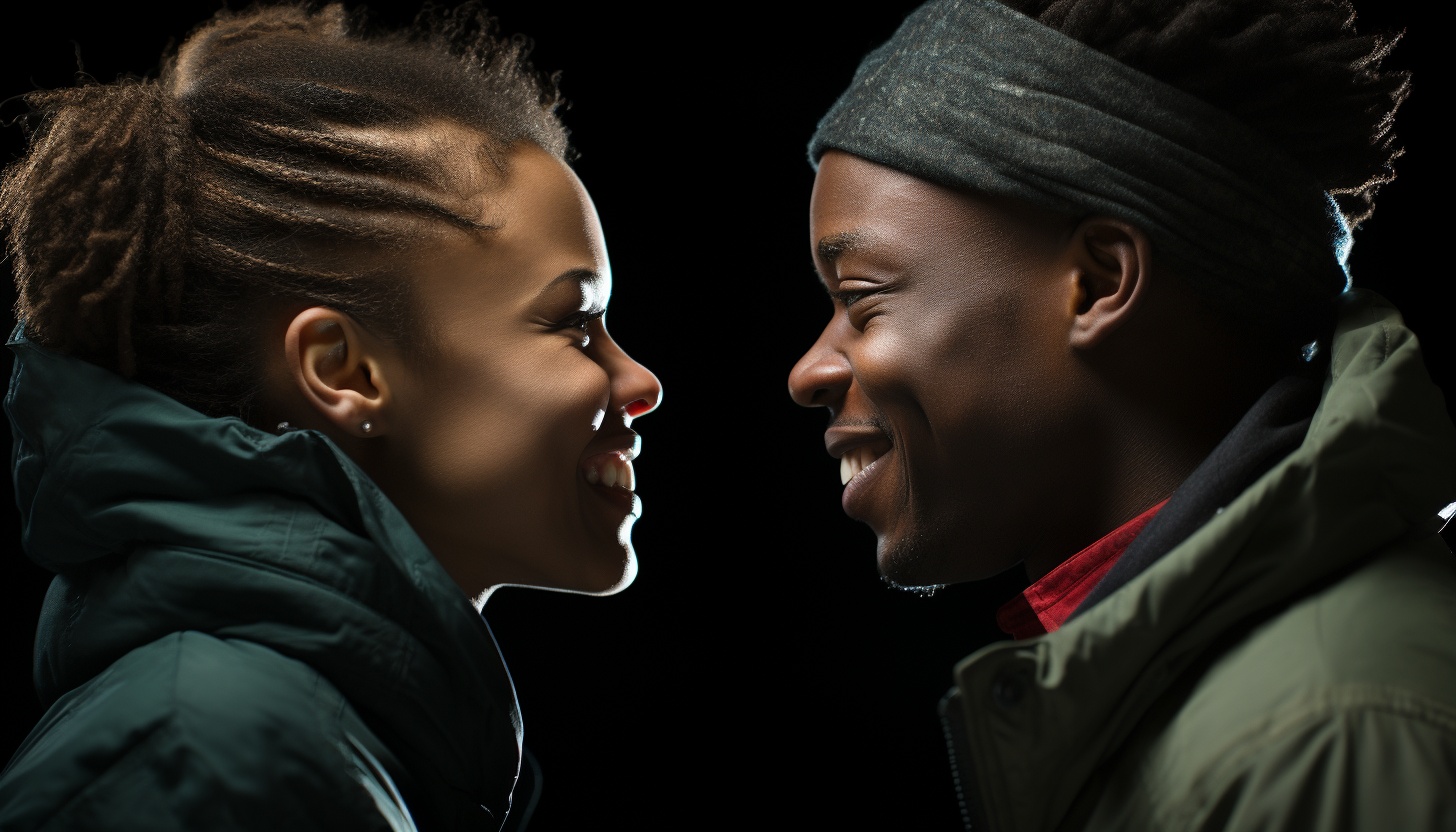
The Intricacies of Body Language: Reading and Sending the Right Signals
Do you know that over 80% of communication is nonverbal?
Understanding the intricacies of body language is vital in both decoding others’ messages and effectively sending your own signals.
In this article, we will explore the importance of body language, uncovering the hidden meaning behind facial expressions, gestures, and posture.
By mastering the art of nonverbal communication, you can enhance your relationships, improve your professional interactions, and ultimately become a more perceptive and effective communicator.
The Importance of Body Language

Understanding the importance of body language is essential in effectively communicating with others. Body language, which includes facial expressions, gestures, and posture, plays a significant role in conveying messages and emotions. It’s a powerful tool that can enhance or undermine the effectiveness of verbal communication. By paying attention to someone’s body language, you can gain valuable insights into their thoughts, feelings, and intentions.
Non-verbal cues can often speak louder than words. For example, crossed arms and a closed-off posture may indicate defensiveness or resistance, while maintaining eye contact and open body language can convey confidence and interest. Being aware of these signals allows you to adjust your own behavior to ensure better communication and understanding.
Moreover, body language can also help to interpret the true meaning behind someone’s words. People may say one thing, but their body language may reveal a different story. For instance, a person may claim to be enthusiastic about a project, but their slouched posture and lack of eye contact may suggest otherwise. By reading these subtle cues, you can better discern the true intentions and emotions of others.
In addition to interpreting body language, being mindful of your own non-verbal cues is equally important. Your body language can influence how others perceive you and can impact the outcome of your interactions. By consciously controlling your posture, facial expressions, and gestures, you can convey confidence, trustworthiness, and approachability.
Understanding Nonverbal Cues

By paying attention to someone’s body language, you can gain valuable insights into their thoughts, feelings, and intentions, allowing you to better understand the nonverbal cues they’re sending. Nonverbal cues refer to the messages conveyed through gestures, facial expressions, posture, and other bodily movements. These cues play a crucial role in communication, often providing more accurate information than verbal expressions alone. Understanding nonverbal cues can help you decipher hidden emotions, detect deception, and gauge someone’s level of comfort or discomfort in a given situation.
One key aspect of nonverbal communication is facial expressions. The face is incredibly expressive and can convey a wide range of emotions, such as happiness, sadness, anger, fear, and surprise. Paying attention to subtle changes in facial expressions can provide important clues about a person’s emotional state and can help you respond appropriately.
Gestures also play a significant role in nonverbal communication. They can enhance or reinforce verbal messages, but they can also convey meaning on their own. For example, a thumbs-up gesture is typically interpreted as a positive sign, while crossed arms may indicate defensiveness or disagreement.
Posture and body positioning can also provide valuable insights into someone’s thoughts and feelings. Leaning in towards someone indicates interest and engagement, while leaning away suggests disinterest or discomfort. Open and relaxed body postures generally convey a sense of openness and approachability, while closed postures, such as crossing arms or legs, may signal defensiveness or unease.
In addition to these nonverbal cues, it’s essential to consider other factors such as eye contact, touch, and personal space. Eye contact can indicate attentiveness and sincerity, while avoiding eye contact may suggest dishonesty or discomfort. Touch can convey a range of emotions, from affection to aggression, depending on the context and the relationship between individuals. Personal space preferences can vary between cultures and individuals, so being aware of and respecting personal boundaries is essential in effective communication.
Reading Facial Expressions

To accurately interpret someone’s emotions and intentions, pay close attention to the subtle changes in their facial expressions. The face is one of the most expressive parts of the body, capable of conveying a wide range of feelings and thoughts. By understanding the different facial expressions and what they signify, you can gain valuable insights into a person’s state of mind.
Facial expressions can be categorized into six basic emotions: happiness, sadness, anger, fear, surprise, and disgust. Each emotion is associated with distinct changes in the muscles of the face, such as the raising of the eyebrows, the widening of the eyes, or the curling of the lips. However, it’s important to note that facial expressions can also be influenced by cultural factors, making it essential to consider the context in which they occur.
In addition to the basic emotions, facial microexpressions, which are fleeting and involuntary expressions that last for just a fraction of a second, can provide crucial information about a person’s true feelings. These microexpressions are often subconscious and can reveal hidden emotions that someone may be trying to conceal.
Decoding Gestures and Posture

How can you accurately interpret someone’s intentions and attitudes through their gestures and posture? It’s a question that many individuals find themselves pondering when trying to decipher the unspoken messages conveyed by body language. Gestures and posture play a crucial role in nonverbal communication, and understanding their nuances can provide valuable insights into a person’s thoughts and emotions.
When decoding gestures, it’s essential to consider both the specific gesture and its context. For example, a person crossing their arms might indicate defensiveness or disagreement, but it could also be a sign of self-comfort or insecurity. Similarly, the meaning of a gesture can change depending on the cultural background of the individual.
Posture, on the other hand, can reveal a person’s confidence, engagement, or even their level of interest. A person standing tall with their shoulders back often exudes confidence and assertiveness. Leaning forward during a conversation can indicate attentiveness and interest, while slouching or avoiding eye contact may suggest disengagement or discomfort.
To accurately interpret gestures and posture, it’s essential to look for clusters of behaviors rather than relying on a single gesture or posture alone. Combining multiple body language cues and considering their context will enable you to gain a more comprehensive understanding of someone’s intentions and attitudes.
Mastering the Art of Sending Signals

When it comes to conveying your intentions and attitudes through body language, mastering the art of sending signals is crucial. It involves understanding the impact of your gestures, postures, and facial expressions on others and being able to use them effectively to communicate your message. Your body language can either reinforce or contradict your words, so it’s essential to be aware of the signals you’re sending.
One key aspect of mastering the art of sending signals is being mindful of your nonverbal cues. Your facial expressions, for example, can reveal a lot about your emotions and intentions. A smile can convey warmth and friendliness, while a furrowed brow can indicate confusion or anger. By consciously controlling your facial expressions, you can better align them with your desired message.
Another important element is your posture. Standing or sitting up straight can convey confidence and assertiveness, while slouching can indicate disinterest or lack of confidence. Your body positioning can also determine your level of engagement. Facing someone directly and maintaining eye contact shows attentiveness and interest, while turning away or avoiding eye contact can signal disengagement or even dishonesty.
Lastly, the way you use your hands and gestures can also send powerful signals. Using open and expansive hand movements can convey enthusiasm and openness, while closed and fidgety gestures may indicate nervousness or uncertainty. It’s important to be aware of these gestures and use them intentionally to support your verbal message.
Conclusion
As you navigate the complex world of human interaction, mastering the art of body language is crucial. Understanding nonverbal cues, reading facial expressions, and decoding gestures and posture allow you to effortlessly interpret the unspoken messages of others.
But it doesn’t stop there. By sending the right signals through your own body language, you have the power to influence and connect with those around you.
So take the time to study and practice this intricate language, and watch as the world opens up before your eyes.






